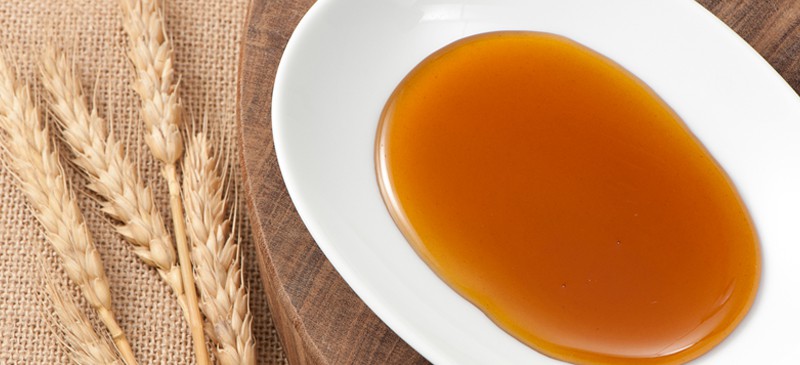This Dr. Axe content is medically reviewed or fact checked to ensure factually accurate information.
With strict editorial sourcing guidelines, we only link to academic research institutions, reputable media sites and, when research is available, medically peer-reviewed studies. Note that the numbers in parentheses (1, 2, etc.) are clickable links to these studies.
The information in our articles is NOT intended to replace a one-on-one relationship with a qualified health care professional and is not intended as medical advice.
This article is based on scientific evidence, written by experts and fact checked by our trained editorial staff. Note that the numbers in parentheses (1, 2, etc.) are clickable links to medically peer-reviewed studies.
Our team includes licensed nutritionists and dietitians, certified health education specialists, as well as certified strength and conditioning specialists, personal trainers and corrective exercise specialists. Our team aims to be not only thorough with its research, but also objective and unbiased.
The information in our articles is NOT intended to replace a one-on-one relationship with a qualified health care professional and is not intended as medical advice.
What Is Maltose? Plus, Is It Bad for You?
June 24, 2019

Maltose, also known as maltobiose or malt sugar, is a part of many foods and beverages you likely know — and possibly love. The sugar is produced in the malting process during the creation of beer and malt alcohol, as well as the fermentation process required to make breads and bagels. In a raw state, most whole foods don’t contain maltose until they are browned or caramelized. Molasses is an example of one of the few uncooked foods that contain maltose. It is also created by plants when their seeds begin to sprout and by our guts when we consume starch.
As a food and beverage sweetener, there are many maltose uses. In addition to added sweetness, another function in food products is to provide added texture. Also, to extend shelf life. With concern growing over the negative impact of high-fructose corn syrup, many food manufacturers are switching to high maltose syrup, because it doesn’t contain fructose. Is this a healthy switch? It’s time to take a closer look at this lesser-known sweetener.
What Is Maltose?
The name “maltose” comes from “malt” and the chemical sugar suffix -ose. One maltose definition (from the Merriam-Webster dictionary) is: “a crystalline dextrorotatory fermentable sugar formed especially from starch by amylase.” In simpler terms, it is a double sugar made of two molecules of glucose, and it is derived from starch. In the human body, the enzyme maltase is responsible for causing the chemical breakdown or hydrolysis of maltose into two glucose molecules.
The maltose chemical formula is C12H22O11. What is maltose made of? As you can see from this maltose formula, it is made up of 12 carbon atoms, 22 hydrogen atoms and 11 oxygen atoms.
The maltose common name is used to describe a disaccharide of two glucose units. A basic disaccharide definition is: sugars formed when two monosaccharides (simple sugars) are joined by glycosidic linkage. Other disaccharide examples include sucrose and lactose.
Some frequently asked question about this sugar include:
Is maltose a carbohydrate?
Yes, it falls under the umbrella of carbohydrates, which are essential macromolecules that can be classified into subtypes, including: monosaccharides, disaccharides, oligosaccharides and polysaccharides. It is considered a sugar and a simple carbohydrate (carbohydrates are sugars in either a simple or complex form).
Is maltose a monosaccharide? Is it a polysaccharide?
It is neither … The maltose structure makes it a disaccharide.
Is maltose a reducing sugar?
Yes, it is … A reducing sugar is a chemical term for a sugar that acts as a reducing agent and can donate electrons to another molecule. Reducing sugars interact with amino acids in foods and beverages, which can lead to desirable browning and aromas (think baked goods).
Does maltose show mutarotation?
Since malt sugar is a reducing sugar, it can undergo mutarotation.
Foods
What is maltose commonly found in? In general, the sugar is not found in high amounts in raw food products. Ancient grains like spelt and kamut are two examples of foods that contain malt sugar in significant amounts in their raw or uncooked state. When certain fruits are canned or in juice form, their maltose content becomes significantly higher.
Beverages containing maltose include some types of beer and ciders as well as non-alcoholic malt beverages. Processed foods high in malt sugar include maltose candy (often jelly candies), some chocolates and ready-to-eat cereals, as well as caramel sauce. High-maltose corn syrup, barley malt syrup, brown rice syrup and corn syrup are all high in malt sugar as well.
Top sources include:
- Kamut
- Spelt
- Cooked sweet potato
- Cooked pizza
- Cooked cream of wheat
- Canned pears
- Guava nectar
- Canned peaches
- Canned cherries
- Canned applesauce
- Molasses
- Breads and bagels (Commonly used grains for these products like wheat, corn, barley and rye all contain it.)
- Some cereals and energy bars
- Malt beverages
How does maltose affect taste? Well, it makes things taste sweeter. However, as you can see from this list above, it often adds sugar content without obvious sweetness, such as in bagels or bread. So in a way, it can be “hidden” in foods that don’t taste especially sweet.
Related: The Worst Halloween Candy & Why You Can’t Stop Eating It
Malt Sugar vs. Table Sugar
If you compare maltose versus sucrose, maltose sugar is not quite as sweet as sucrose, or table sugar. Most of the time, malt sugar can be used in place of table sugar in a little more than a 1:1 substitution ratio to obtain the same level of sweetness.
The major difference between maltose and table sugar is the fact that table sugar contains both glucose and fructose, while maltose only contains glucose. According to Alan Barclay, accredited practicing dietitian, spokesperson for the Dietitians Association of Australia and Chief Scientific Officer at the Glycemic Index Foundation, “There are subtle differences in the way they affect blood glucose levels,” Barclay said. “Glucose and maltose will raise blood glucose levels most rapidly of all the sugars and therefore increases insulin secretion. Whereas fructose will have the least effect on glucose and insulin, but it will raise triglyceride levels.”
Overall, the impact of maltose on health has not been researched as thoroughly as sucrose. Processed sucrose (refined sugar) and maltose (especially as high-maltose corn syrup) found in non-whole foods such as cereals and pizzas are not healthy sources of sugar in the diet. These added sugars are known to cause major negative health effects when consumed in excess. A high sugar diet is linked to high blood pressure, increased chronic inflammation and a greater risk of dying from heart disease.
High-Maltose Corn Syrup vs. High-Fructose Corn Syrup
There is a maltose substitute for high-fructose corn syrup (HFCS): high-maltose corn syrup (HMCS). When high-fructose corn syrup started to get such a bad reputation, food and beverage manufacturers started to use HMCS instead. As with HFCS, it not only adds sweetness, but also texture and extends the shelf life of a product.
Maltose and fructose can both be made from corn sugar. The biggest difference between these two corn syrups is that the maltose version is slightly less sweet and doesn’t contain any fructose. However, both HMCS and high-fructose corn syrup are refined products made from corn, and some sources say that over 90 percent of the corn in North America is genetically modified.
While more research on the health effects of HMCS is warranted, both maltose and fructose corn syrups that are highly refined and corn-based are forms of added sugar, which experts clearly advise limiting or avoiding consumption entirely as part of a healthy diet.
Risks and Side Effects
It’s well established that not all varieties of sugar are equal in terms of nutrition. When you consume maltose because you’re eating a cooked sweet potato, you’re also intaking significant amounts of fiber as well as key vitamins and minerals. However, when you eat it because you’re having a processed food like a cracker, you’re likely not getting much more than added sugars and carbohydrates into your diet.
As with all sugars, the body can use malt sugar as an energy source, but as an added sugar, it should be consumed in moderation to avoid negative health effects.
It’s possible to have an intolerance to malt sugar. What is maltose intolerance? Maltose intolerance is a bodily enzyme failure characterized by an inability of the gut to properly break down maltose sugar molecules in food due to low maltase enzyme activity of the small intestinal lining. An intolerance can result in diarrhea and other gastrointestinal symptoms.
Eating too many foods that contain added sugars can lead to poor nutrition, weight gain, tooth decay and raised triglyceride levels.
Dietary Recommendations
It’s best to consume malt sugar when it occurs naturally in a food (such as a cooked sweet potato) but to avoid processed foods that contain it. Maltose is a sugar so as with all sugars, its consumption should be limited. There are currently no specific recommendations for maltose intake.
Maltose, or malt sugar, is an ingredient in foods that is considered an “added sugar.” The American Heart Association advises limiting your daily intake of added sugars to no greater than half of your daily discretionary calories allowance. For women, that’s no more than 100 calories per day, or about 6 teaspoons of sugar and for men, it’s 150 calories per day, or about 9 teaspoons of sugar. They also advise no added sugar for children younger than age two and no more than 100 calories from added sugar a day for children over the age of two.
Final Thoughts
- Ancient grains like spelt and kamut are examples of foods that naturally contain malt sugar in significant amounts in their raw or uncooked state, while sweet potatoes have significant levels once they are cooked.
- When consumed in cooked sweet potatoes or ancient grains, the sugar occurs naturally rather than being added to a processed food product like cereals or energy bars.
- Many processed foods are high in malt sugar, including malted beverages, candies, crackers, breads, bagels and canned fruit.
- Maltose contains two molecules of glucose, while table sugar (or sucrose) contains both glucose and fructose. It is typically used in a 1:1 substitution for table sugar, but it is slightly less sweet.
- Manufacturers use high-maltose corn syrup as a substitute for high-fructose corn syrup, but both syrups are highly refined and sourced from corn, which is often a GMO.
- As with all sources of added sugar, maltose as a food additive should be limited due to the fact that added sugars are clearly associated with serious unwanted health effects, including obesity, diabetes and heart disease.
Read Next: 11 Best Sugar Substitutes (the Healthiest Natural Sweeteners)

